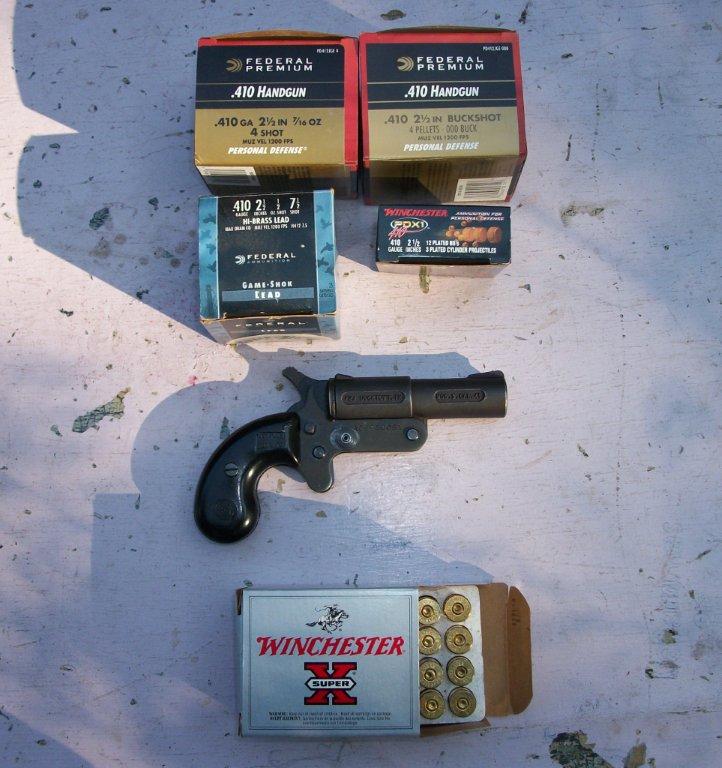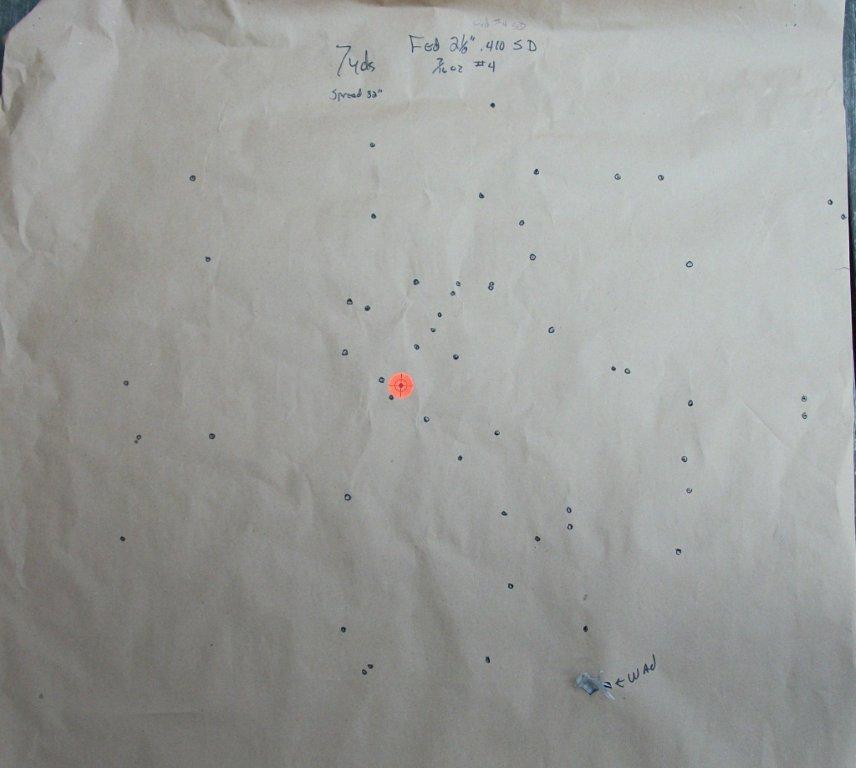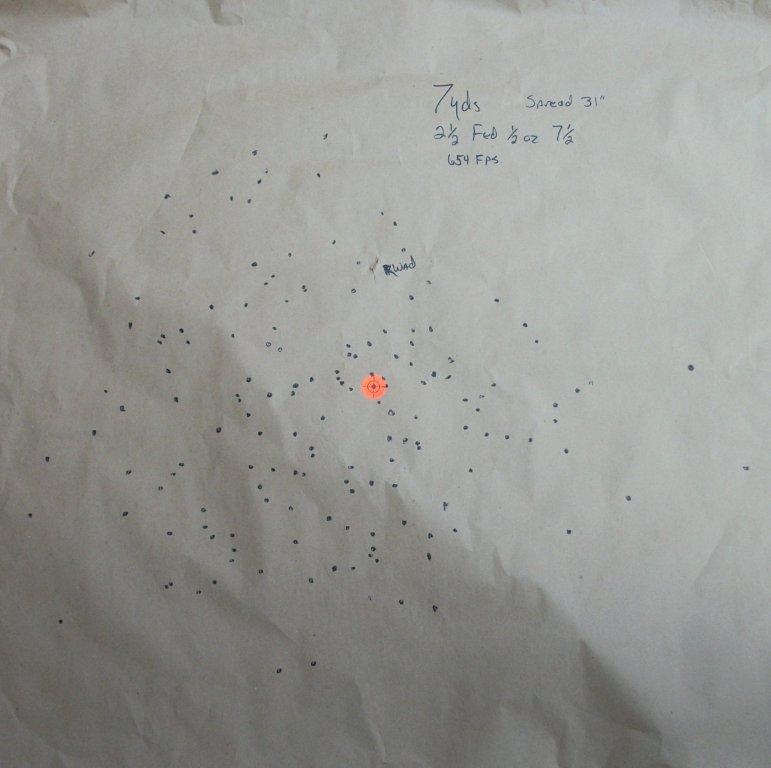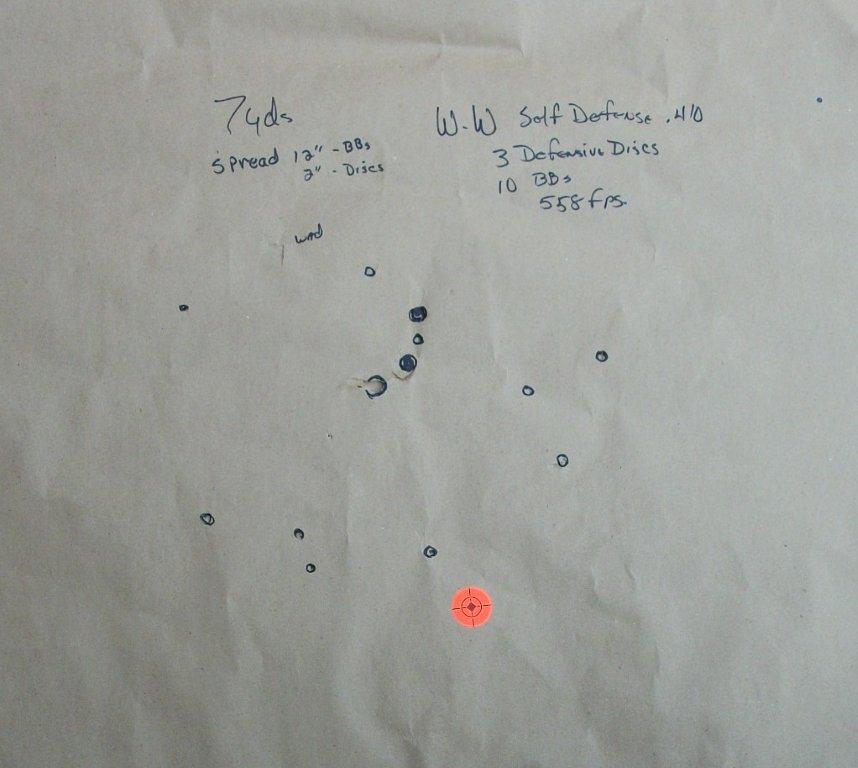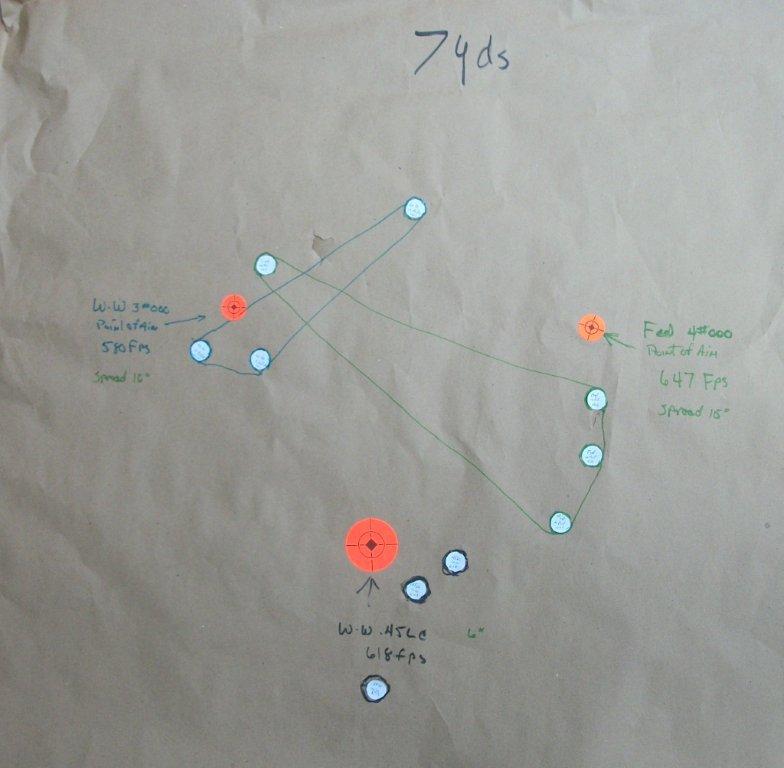 |
.45 / .410 Derringer
By Marshall Williams
|
I have shot a small number of .410 handguns over the years including an original H&R Handy Gun, two Thompson Center Contenders, one a .44 Hot Shot and the other a .45/410, and most recently, a Taurus Judge, however, one type never really caught my attention, the little, inexpensive, mostly single-shot derringers. Recently my next door neighbor mentioned that he had one, so I asked to borrow it and see what I might learn in half a morning’s shooting. My neighbor’s gun is a simple, cheaply made, break-top, single-barrel gun. Action is opened by pulling backwards on a release under the breech of the barrel. The simple mechanism has a spur trigger and a hammer with integral firing pin. The hammer has only a full cock notch, no safety notch or half-cock position. There is no extractor, but the rim recess of the chamber has relief cuts for fingernails, and I was able to extract all empties without resorting to tools. The gun bears the following markings: “FMJ Ducktown, TN” on the right side of the chamber and “Mod. D. CAL.45” on the right side of the barrel. The left side of the chamber says, “Safety On Before Loading.“ This is good advice as otherwise the firing pin rests on the loaded cartridge’s primer, and the gun can fire if dropped on the hammer. Both grips bear a “Cobray” logo. The right one also has a little arrow pointing to the cross-bolt safety and says “Push Flush for Safe” . The length over all is about 6 ¾ inches and the barrel is 3 3/8 inches long. The barrel appears to be a casting and the frame/receiver appears to be made of stampings held together by a combination of welds and pins secured by split rings. Finish is coarse, similar to the old “Parkerizing.” The grips are black plastic. Locally similar guns sell new for under $150, and often under $100. The chamber and bore accommodate both .45 Colt cartridges and the .410 shot shells up to 2 ½ inches long. To do so, the first part of the chamber is appropriately dimensioned for the .45 Colt cartridge. At the front end of the chamber, there is a very long throat large enough to accommodate a 2 ½ inch .410 bore shotgun shell, but not a three inch .410 shell. I tried two different types and neither would fully enter the chamber. The last approximately 5/8 inch of the bore is rifled for the .45 Colt. The chamber is similar to that used on the Taurus Judge. Weight of the little gun is just 14 ounces. This gave me pause; both .410s and .45 Colts can develop significant recoil. Recoil proved to be stout but not painful. The wide bird’s head grip helps handle recoil and velocities were substantially reduced in the short barrel. All shooting was done at seven (7) yards and the chronograph was set at five feet in front of the gun’s muzzle.
I first shot a Federal Premium ,410 Handgun Personal Defense shot shell loaded with 7/16 ounce of #4 shot. (Estimated to contain 59 pellets.) The pattern spread to 32 inches in just seven yards! For comparison, in the Taurus Judge this load spread 27 inches at seven yards and that was huge My chronograph gave a faulty reading, so I do not know the velocity of this shot. My guess is that it was about 650 fps. Even at this reduced velocity, a number four pellet will penetrate more than two inches of flesh.
I next shot a standard .410 small game load, Federal’s High brass 2 ½ inch shell loaded with ½ ounce of #7 ½ shot, approximately 172 pellets. Velocity was 654 feet per second and spread was 31 inches. It is obvious that this little gun shoots significantly larger patterns than the Taurus Judge. The pattern was essentially like the previous one, but with nearly three times as many pellets as the load of #4s, it looked much better. Penetration at this reduced velocity will exceed an inch. These patterns are huge, the largest I have ever seen at seven yards range, and significantly larger than patterns of any other rifled barrel gun that I have patterned. These would include .38 Special and .44 magnum revolvers, .45 auto pistol and revolver, .44 magnum carbine, .45-70 rifle, Thompson-Center Contender with .45-410 barrel, and most recently a Taurus Judge revolver with 2 ½ inch chamber and three inch barrel. However, both patterns showed normal pellet distribution. If one did not know what gun had fired them or at what distance, they would appear to be ordinary shotgun patterns fired at 30-35 yards.
My third shot was with the interesting Winchester Supreme Elite 2 ½ inch .410 personal defense cartridge containing three defensive discs and 12 copper plated BBs. The defensive discs clustered in the center of the pattern at about 2 ½ inches while the BBs spread over an area about 12 inches across. In the Taurus Judge, the discs were about the same, but the BBs spread over 27 inches. Chronograph showed a velocity of 558 fps.
Fourth shot was with some older W-W 2 ½ inch shells loaded with three 000 buckshot. Velocity was 580 fps. Two of the buckshot were close to the point of aim while the third landed about a foot to the right. A 000 buckshot weighs about 70 grains. At 580 fps, each one would have an energy of 52 ft. lbs. My fifth shot was with the new Federal Premium .410 Handgun 2 ½ inch Personal Defense shot shell loaded with four 000 buckshot. Similar to the preceding three 000 buck load, this one put three buckshot near the point of aim, but the fourth one landed some 18 inches to the right. Velocity was 647 fps. Each of the four buckshot would have an energy of 73 ft. lbs. The last shooting was with factory W-W .45 Colt Super-X ammo with 255 grain lead round nose bullet. All three shots landed just below the point of aim and the group measured six inches. However, the gun popped open on the third shot and the probably affected shot placement. Apparently I did not close it properly. Velocity averaged 618 fps and energy would be 216 ft. lbs. All cartridges were L-O-U-D in the little gun. Having recently shot several of these same loads in a Taurus Judge, I can make a few general observations. In general, the Judge gave higher velocities, on the order of 130 to 200 fps higher. This is no doubt due to the longer combined chamber and barrel length. The Judge also handled recoil better due to a better shaped “Ribber” grip. Shot and buckshot spread wider in the derringer, with the exception of the BBs in the Winchester Supreme Elite load. These guns are not for precision shooting, but I think they have a place. Unquestionably they would be formidable for close range self defense, say inside your bedroom or when a carjacker sticks his nose in your face. For someone who has little money, it may be the only large caliber handgun they can afford. (The Judge costs about five times as much as the derringer.) Locally nearly everyone spends a lot of time in the woods and forests, especially cutting their winter firewood. Many of the locals fear snakes and kill all they see. In fact, there are two dangerous species in our woods and sometimes on our porches, the copperhead and the timber rattler. Neither is uncommon. The little gun will do that job nicely inside seven yards. My neighbor said that at a range of about three yards, the little derringer and a half ounce of number sixes will “really ball up a snake.“ On the other hand, the shot patterns spread so quickly that the little guns would not be likely to kill rabbits and squirrels at any range one is likely to encounter them, so would be of little use in collecting food. A little gun like this costs little, takes up little room, and will spread out a lot of lead at ranges inside a bedroom or car. It is no gun for precision shooting. Recoil is not fearsome. I will return the little pistol to my neighbor and will not buy one for myself, but honestly, I was favorably impressed with it
© Marshall Williams , 2011 |
